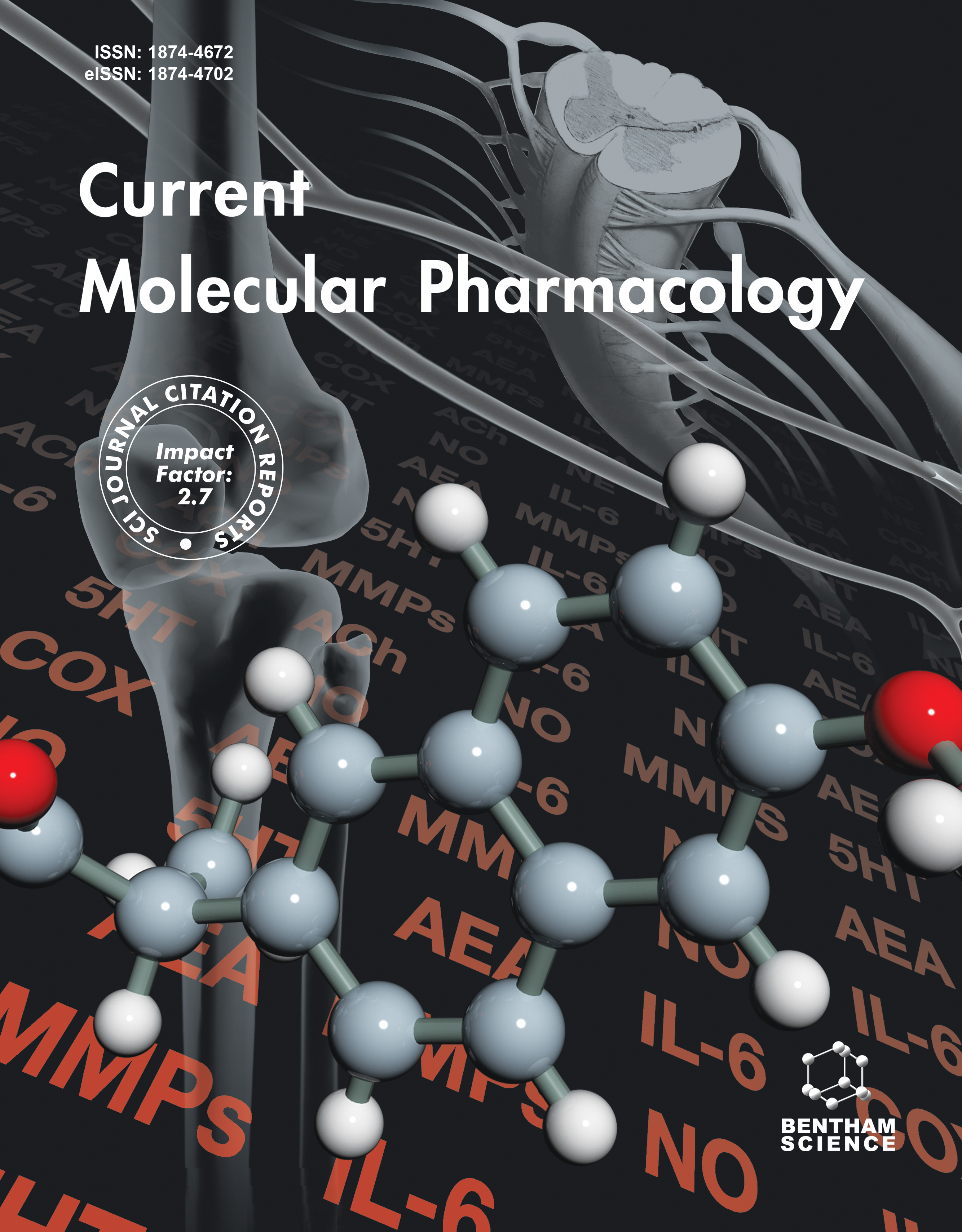- Home
- A-Z Publications
- Current Molecular Pharmacology
- Previous Issues
- Volume 6, Issue 1, 2013
Current Molecular Pharmacology - Volume 6, Issue 1, 2013
Volume 6, Issue 1, 2013
-
-
ENaC Inhibitors and Airway Re-hydration in Cystic Fibrosis: State of the Art
More LessBy Mike AlthausCystic fibrosis (CF) is a hereditary disease caused by mutations in the gene encoding the chloride channel “cystic fibrosis transmembrane conductance regulator” (CFTR). The lack of functional CFTR in CF airways leads to impaired ion and fluid homeostasis of the fluid layer which lines the airway surfaces (ASL). The ASL is important for proper ciliary beat and clearance of mucus from the airways. According to the “low Read More
-
-
-
Treatment of Pulmonary Edema by ENaC Activators/Stimulators
More LessLungs contain a particular amount of fluid that is crucial for proper lung function. This fluid content is tightly controlled within certain limits. Fluid accumulation in the alveolar airspace impairs gas exchange and represents a lifethreatening condition referred to as pulmonary edema. Ion transport processes by pulmonary epithelia represent a mechanism, responsible for fluid absorption from the airspace. Thus, it is obviou Read More
-
-
-
ENaC Regulation by Proteases and Shear Stress
More LessAuthors: Shujie Shi, Marcelo D. Carattino, Rebecca P. Hughey and Thomas R. KleymanEpithelial Na+ channels (ENaCs) are comprised of subunits that have large extracellular regions linked to membrane spanning domains where the channel pore and gate reside. A variety of external factors modify channel activity by interacting at sites within extracellular regions that lead to conformational changes that are transmitted to the channel gate and alter channel open probability. Our review addresses two external Read More
-
-
-
ENaC Modulators and Renal Disease
More LessAuthors: Diego Alvarez de la Rosa, Juan F. Navarro-Gonzalez and Teresa GiraldezThe epithelial sodium channel (ENaC) plays an essential role in transepithelial sodium reabsorption in the renal connecting tubule and collecting duct. Therefore, controlling ENaC activity is an important regulatory event in electrolyte and extracellular volume homeostasis, and thus in the control of blood pressure. Many independent signaling pathways converge on ENaC, although the most important for its physiological rol Read More
-
-
-
ENaC in the Brain - Future Perspectives and Pharmacological Implications
More LessAuthors: Teresa Giraldez, Jaime Dominguez and Diego Alvarez de la RosaThe epithelial sodium channel/degenerin (ENaC/deg) family of ion channels is formed by a large number of genes with variable tissue expression patterns and physiological roles. ENaC is a non-voltage gated, constitutively active channel highly selective for sodium. ENaC is formed by three homologous subunits, α, β and γ, and a fourth subunit (δ) has been found in human and monkeys that can substitute α to form functiona Read More
-
-
-
Kinases as Targets for ENaC Regulation
More LessAmiloride-sensitive epithelial sodium channels (ENaCs) transport Na+ and are essential for salt and fluid homeostasis across epithelial tissues. Several pathological conditions of renal and pulmonary tissues are associated with abnormal ENaC function. The signalling pathways that regulate ENaC activity utilise a number of kinases. Over recent years, more have been identified and their mechanisms of action expanded. The f Read More
-
Most Read This Month
Article
content/journals/cmp
Journal
10
5
false
en


